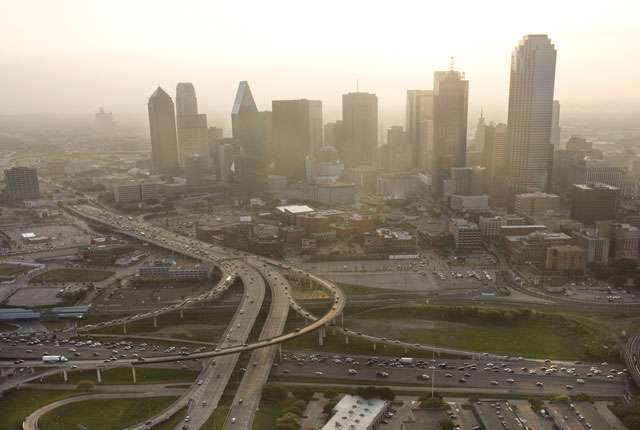Critics on both sides are wrong about EPA's ozone standard, expert says

The Environmental Protection Agency's October decision to tighten ozone smog standards has drawn the ire of critics on both the left and right. Environmentalists have argued that the proposed new 70-parts-per-billion (ppb) standard doesn't go far enough, and business advocates claim attaining it will be too costly and yield few benefits.
Rice University ozone pollution expert Daniel Cohan said both sides are wrong.
In a column published online today in the Houston Chronicle's "Gray Matters" online magazine, Cohan, associate professor of civil and environmental engineering at Rice, said the tighter standards that environmentalists want are unrealistic because even the 70-ppb standard is unattainable for Texas' two largest metropolitan areas, Houston and Dallas, by the EPA's 2025 deadline.
"Tightening the current 75-ppb standard by just 5 ppb doesn't sound unreasonable, but the chemistry of ozone formation causes ozone to be insensitive to controls, which simply means that large reductions in precursor gases like nitrogen oxide (NOx) and hydrocarbons are needed to close that 5-ppb gap," Cohan said. "EPA estimates that the emissions reductions required for Houston and Dallas to meet 2025 attainment would include 123,000 tons of NOx and 20,000 tons of hydrocarbons, and there isn't much that the cities or state regulators can do to achieve that."
Cohan said critics who have argued in favor of keeping the 75-ppb standard are also wrong because an increasing body of scientific literature shows that ozone harms health, even at levels below the proposed new 70-ppb standard.
"History repeatedly shows that industry decries the cost of complying with proposed new air-quality standards and then goes on to meet those standards more affordably than expected," Cohan said. "The important issues are how standards are set and measured and how compliance strategies impact health benefits. There are better ways to set standards and ensure that they improve health, but those would require updates to the Clean Air Act."
Cohan's lab specializes in developing photochemical models and applying them to the study of air-quality management, uncertainty analysis, energy policy and air-quality health impacts.
More information: Will EPA's Proposed New Ozone Standards Provide Measurable Health Benefits? www.tceq.state.tx.us/publicati … able-health-benefits
Daniel S. Cohan et al. Nonlinear Response of Ozone to Emissions: Source Apportionment and Sensitivity Analysis, Environmental Science & Technology (2005). DOI: 10.1021/es048664m
Journal information: Environmental Science & Technology
Provided by Rice University

















